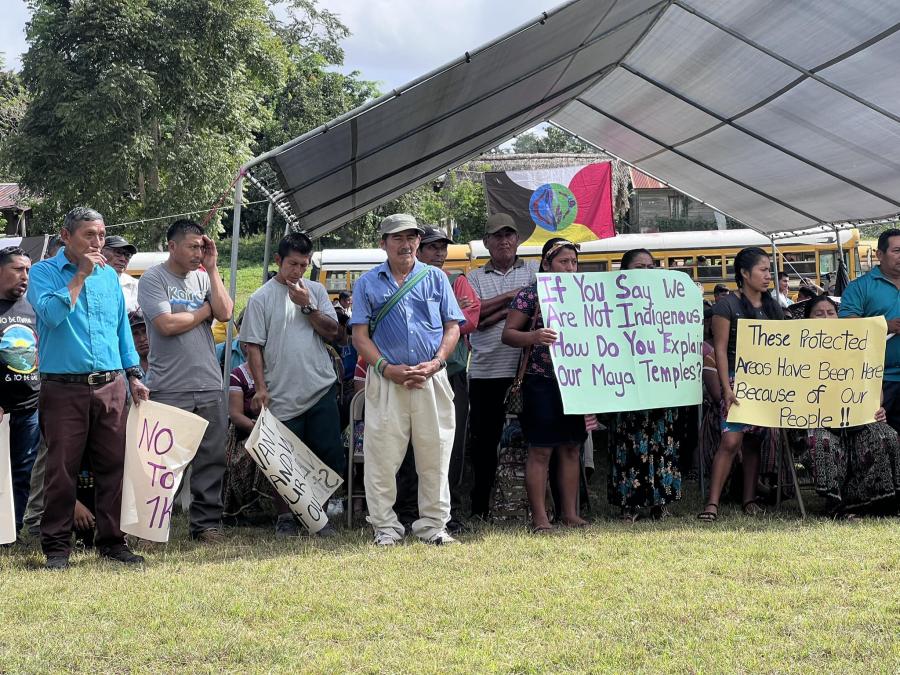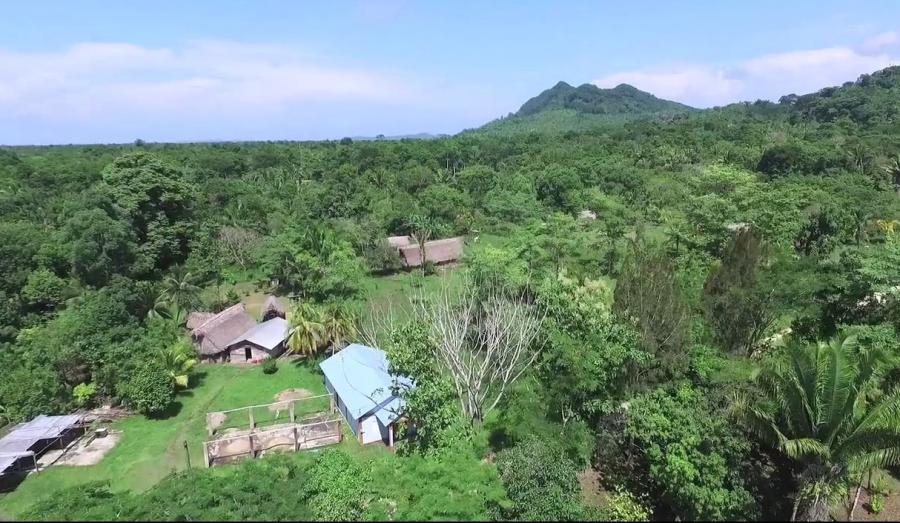Many masked dances in the Maya culture have pre-Columbian roots and were incorporated into the Catholic celebration calendar after Spanish contact and conquest. Dances historically performed by the Maya cultures in southern Belize are no exception. The Cortez, Deer, Devil, and Monkey dances, performed by the Mopan and Kekchi, all have a Catholic facade covering a Maya history. Although many stories and acts have been altered to comply with Catholic tradition, these cultural celebrations remain rooted in ancient legends. The Catholic belief system that attributes certain powers to saints was similar to the pre-contact Maya religious universe that delegated certain powers to individual deities. Therefore, masked dances survived and even thrived in a post-contact, Catholic Maya cultural landscape.
The Role of the Dance
Of the Maya traditions that survived the cultural conquest, the masked dance remains one of the most important because it commemorates patron saint's feast days or other religious holidays. Masked dances are significant community events because they involve large numbers of people, demand a great deal of preparation time, and help redistribute local funds through payment for food preparation and musicians. Thus, it serves to enhance solidarity, and material and economic exchange in a community.
Until recently, masked dances maintained great social importance among Mopan and Kekchi Maya. In the past two decades, the tradition of performing masked dances has lost village-wide support or been abandoned completely. One significant factor that has contributed to the decline of this cultural institution is evangelical missionaries from the United States.
Protestant Missions in Maya Culture
Belize is a convenient destiny for missionaries from the United States because most Belizeans speak English and have relatives or friends living in the United States. As a result, large numbers of evangelical Protestants began establishing missions in Belize in the early 1970s.
Before the missionary invasion, the Maya speak of the "old ways" when festivals and masked dances were an important part of their culture. The old ways were a time when the Maya Catholic belief system "permeated all parts of Maya life." The civic and religious cargo systems dominated village politics and religious life. Each village celebrated major Catholic holidays with public dances and festivals, and the communal land and labor systems were supported by all village men. Many villagers believed that when dances were no longer performed, they lost a part of Maya life that served to unite the community under a common cultural identity. Celebrating the feast day of a town's patron saint helped define the communal identity of that village. During their celebrations, the villagers were not only Maya, they were also Mopan of San José or the Kekchi of San Miguel. When these celebrations were discontinued, there was less communal cultural identity and more factionalism.
Protestant missionaries forbid converts from participating in activities that have ties to Maya cultural traditions. When one converts, he or she is expected to be born again not just spiritually, but also culturally. This means giving up rituals that are connected with the Maya faith and culture that were allowed to continue under Catholicism. Catholic officials tolerated and even promoted performances with monetary support in order to encourage indigenous participation in Catholic life. However, when Protestant conversion began, these celebrations were abandoned because they were considered "heathen" rituals.
Those individuals who are willing to break with the Maya Catholic culture and become Protestants are rewarded by missionaries with materials that include medicine, clothing, cash, and technological assistance for farming. In poor villages, there is enormous temptation to embrace this new lifestyle and break with the past. However, social costs are also involved. Maya Mennonite converts must wear the plain clothes that have been adopted by their American counterparts, and they are viewed with scorn by Maya Catholics. According to many villagers, they are rejecting their past, their families, and their culture by visibly segregating themselves.
Even Among Mopan Catholics today, many traditions associated with their culture are being abandoned because of the controversy surrounding the Protestant missionary issue. Entire communities and families have split along religious lines; thus, the cultural solidarity that motivates individuals to continue many traditions is disappearing. As a result of this factionalism, few masked dances have been performed in recent years. Only the Mopan Deer Dance has been recently performed in San Antonio, the largest Maya settlement in southern Belize. In smaller villages, where the defection of Maya Catholics has a stronger impact on communal ceremonies, it appears that dances have been abandoned completely. In the Mopan village of San José, for instance, there have been no masked dances since the early 1980s. As a result, most young villagers have never seen or participated in a masked dance. Even if there was a desire to revive this tradition, it would be difficult in many villages because of the lack of knowledge regarding the actual performance of the masked dance.
References
Davidson, William V. 1987. "The Amerindians of Belize, an Overview." América Indígena. 47:9-22.
Gregory, James R. 1987. "Men, Women, and Modernization in a Mayan Community" Belizean Studies. 15(3):3-32.
Steinberg, M.K. 1996. "Folk House-types as Indicators of Tradition: the Case of the Mopan Maya in Southern Belize." Yearbook, Conference of Latin Americanist Geographers. Volume 22, edited by D. Hopkins and S. Driever. pp. 87-92.
Wilk, Richard R., and M. Chapin. 1990. Ethnic Minorities in Belize: Mopan, Kekchi, and Garifuna. Belize City: Society for the Promotion of Education and Research (SPEAR).
Wilk, Richard R. 1991. Household Ecology: Economic Change and Domestic Life Among the Kekchi Maya in Belize. Tucson: University of Arizona Press.
------------. 1986, "Mayan Ethnicity in Belize." Cultural Survival Quarterly 10/4:73-78.
Article copyright Cultural Survival, Inc.



